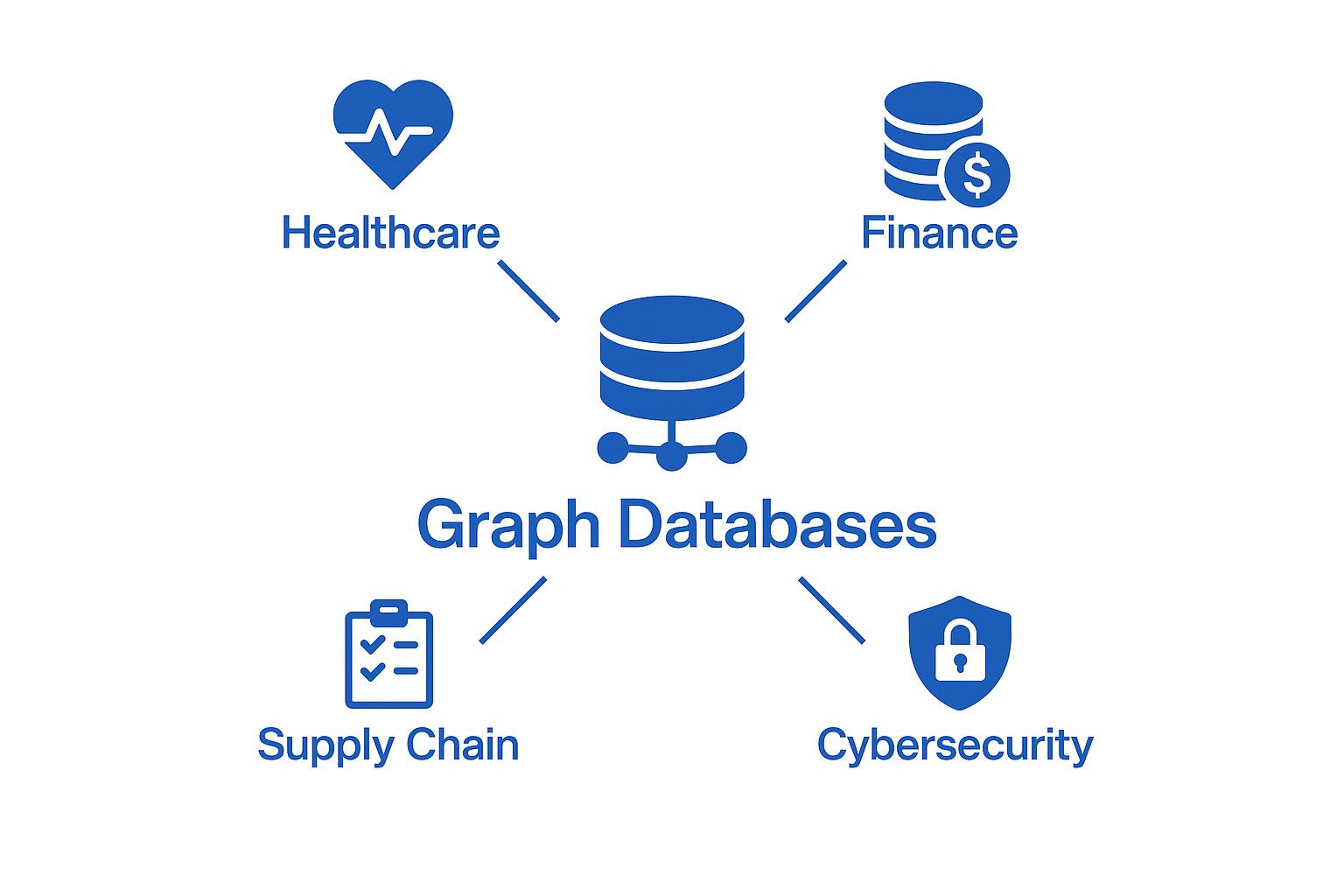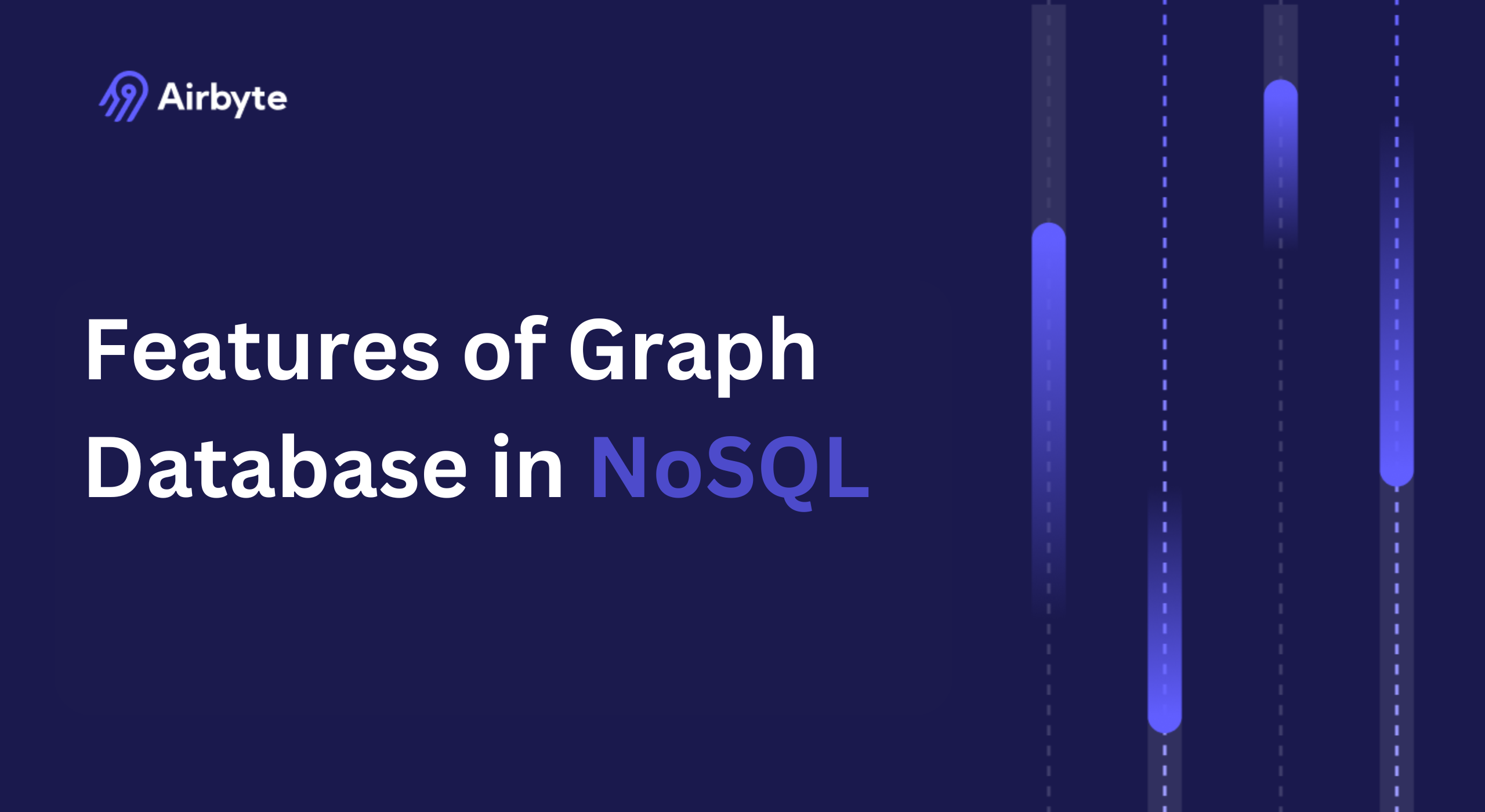10 Features of Graph Database in NoSQL: A Beginner’s Guide
Summarize this article with:
✨ AI Generated Summary
Graph databases, a type of NoSQL database, excel at modeling and querying complex, interconnected data by treating relationships as first-class citizens, enabling efficient traversal without costly joins. Key features include optimized relationship handling, flexible schema evolution, horizontal scalability, low-latency queries, and advanced analytics, making them vital for industries like healthcare, finance, supply chain, and cybersecurity.
- Security challenges involve granular access control, privacy protection, compliance, encryption, and multi-tenancy isolation.
- Types include Property Graphs (e.g., Neo4j), RDF Graphs (e.g., Apache Jena), and multi-model databases (e.g., Azure Cosmos DB).
- Graph databases support ACID transactions and use query languages like Cypher, Gremlin, and SPARQL.
Many organizations struggle with the limitations of traditional relational databases when analyzing complex, interconnected data. Unlike rigid table structures that force artificial relationships through costly joins, graph databases offer a natural way to model and query connected information, making them essential for modern data-driven insights.
Graph databases have become increasingly vital as businesses recognize their power for fraud detection, recommendation engines, supply chain optimization, and real-time analytics.
A graph database is a NoSQL database specifically designed to handle relationships as first-class citizens, enabling organizations to discover hidden patterns and derive insights that would be nearly impossible with traditional approaches.
This comprehensive guide explores the essential features that make graph databases unique within the NoSQL ecosystem, their types, security considerations, and transformative applications across industries.
What Is a Graph Database in the NoSQL Ecosystem?
A graph database is a NoSQL database that utilizes graph theory to store, organize, and query data through interconnected nodes and relationships.
Unlike other database types that store data in tables or documents, graph databases use three fundamental components:
- Nodes represent entities or data objects such as users, products, or locations. Each node can maintain unlimited relationships with other nodes without predetermined schema constraints.
- Edges define the connections between nodes, representing relationships like "purchased," "visited," or "friends with." These relationships carry semantic meaning and can be traversed efficiently during queries.
- Properties provide additional context through key-value pairs attached to both nodes and edges. For example, a user node might have properties like name and email, while a purchased edge could include transaction amount and timestamp.

This structure enables natural modeling of complex relationships. Consider a social network where a Person node with properties like Name, Email, and Date of Birth connects to other nodes through relationships such as COLLEAGUE_OF (with a Duration property) and FRIEND_OF. This approach eliminates the artificial constraints of table-based models while maintaining query performance.
What Are the Key Features That Define Graph Databases in NoSQL?
Graph databases in the NoSQL landscape offer distinct advantages through specialized features designed for relationship-centric data management.
Optimized Relationship Handling
Graph databases natively manage one-to-one, one-to-many, many-to-one, and many-to-many relationships by modeling them directly as edges.
This direct representation enables instant relationship traversal without expensive join operations.
Flexible Data Modeling
Schema evolution occurs dynamically without downtime or costly migrations. New node types, edge relationships, or properties can be added incrementally as business requirements evolve.
Horizontal Scalability
Modern graph databases distribute data across multiple nodes while maintaining query performance as datasets grow, enabling enterprise deployments that support massive user bases and complex analytical workloads.
High Availability Architecture
Data replication across multiple machines ensures continuous operation even during hardware failures.
Join-Free Query Performance
Relationships exist as explicit edges rather than implicit foreign-key references, eliminating the computational overhead of joins and resulting in highly efficient relationship queries that scale with the portion of the graph traversed, rather than the overall database size.
Advanced Indexing Capabilities
Specialized indexes accelerate both node lookups and relationship traversals by creating optimized access paths to frequently queried data.
Massively Parallel Processing Support
Complex analytical workloads are distributed across multiple processors or nodes for simultaneous execution.
Comprehensive Data Integration
Graph databases integrate with diverse data sources through specialized connectors and transformation tools. Modern platforms support Change Data Capture for real-time synchronization, streaming data ingestion, and integration with analytical workflows.
Tools like Airbyte enhance these capabilities with 600+ pre-built connectors and features, including developer-friendly pipelines via PyAirbyte and multiple sync modes for flexible replication strategies.
Low Latency Performance
Real-time queries execute within milliseconds even on large graphs, supporting interactive applications that require immediate responses.
Deep Analytics Optimization
Graph databases excel at complex analytical operations, including shortest-path calculations, community detection algorithms, centrality measures, and predictive modeling on connected data.
What Are the Security Considerations for Graph Databases in Enterprise Environments?
Graph databases introduce unique security challenges that differ significantly from traditional database systems due to their interconnected nature and relationship-centric data model.
Access Control and Permission Management
Traditional role-based access control becomes complex in graph environments where relationships can expose sensitive information through traversal paths. Organizations must implement granular permissions that control not only node access but also edge traversal patterns.
Data Inference and Privacy Protection
Graph structures enable inference attacks where malicious actors deduce sensitive information through combinatorial queries across relationships. Mitigation measures include differential privacy techniques, relationship obfuscation, and query-pattern monitoring.
Compliance and Governance Challenges
Regulatory requirements like GDPR's "right to be forgotten" become complex in graph databases, where deleting a node might orphan related data or break referential integrity. Automated data lineage tracking is essential.
Encryption and Data Protection
Implementation requires end-to-end encryption for data in transit and at rest, with particular attention to edge properties that might contain sensitive metadata.
Network Security and Multi-Tenancy
Graph databases often operate in distributed environments requiring secure communication between nodes and protection against network-based attacks. Multi-tenant deployments must ensure strong logical isolation between tenant graphs, using tagging, access control, or separate instances as appropriate to prevent unauthorized cross-tenant access.
What Are the Different Types of Graph Databases Available?
- Property Graph Databases: Property graphs store data as nodes and edges with associated properties in key-value formats. Popular implementations include Neo4j, TigerGraph, and ArangoDB.
- Resource Description Framework (RDF) Graphs: RDF graphs follow W3C standards for semantic-web applications, storing data as subject-predicate-object triples. Implementations include BlazeGraph, Apache Jena, and AllegroGraph.
- Multi-Model Graph Approaches: Modern systems such as Azure Cosmos DB and ArangoDB blend graph capabilities with document and key-value models, while Amazon Neptune is a specialized graph database.
How Are Graph Databases Transforming Modern Industry Applications?

Healthcare and Precision Medicine
Graph databases model complex relationships among genes, proteins, diseases, and treatments, enabling faster drug discovery and personalized medicine.
Financial Services and Risk Management
Advanced fraud-detection systems leverage graph traversal to uncover suspicious transaction patterns spanning multiple accounts and devices.
Supply Chain and Logistics Optimization
Organizations achieve end-to-end traceability and optimize routing through shortest-path algorithms and real-time network analysis.
Cybersecurity and Threat Intelligence
Security teams correlate threat data across multiple sources to assemble comprehensive attack timelines and detect anomalies.
Conclusion
Graph databases have revolutionized how organizations model and analyze complex interconnected data across industries. Their ability to treat relationships as first-class citizens enables deeper insights that would be impossible with traditional database approaches.
Modern graph platforms combine enterprise-grade security with performance at scale while eliminating costly join operations. As data complexity continues to grow, graph databases will become increasingly essential for organizations seeking competitive advantages through relationship-centric analytics.
Frequently Asked Questions
What makes graph databases different from other NoSQL databases?
Graph databases treat relationships as first-class data elements, making them ideal for queries that require deep traversal across connected entities.
Are graph databases suitable for transactional applications?
Yes. Modern graph databases support ACID transactions and often provide both OLTP and OLAP capabilities.
How do graph databases handle data privacy and security?
Through relationship-aware access controls, traversal restrictions, encryption of nodes and edges, and monitoring for inference attacks.
What query languages do graph databases use?
Common languages include Cypher (Neo4j), Gremlin (Apache TinkerPop), and SPARQL (RDF graphs).
How do I choose between property graphs and RDF graphs?
Use property graphs for flexible, operational workloads with rich metadata. Choose RDF graphs for knowledge-management scenarios requiring standardized vocabularies and reasoning.

.webp)
